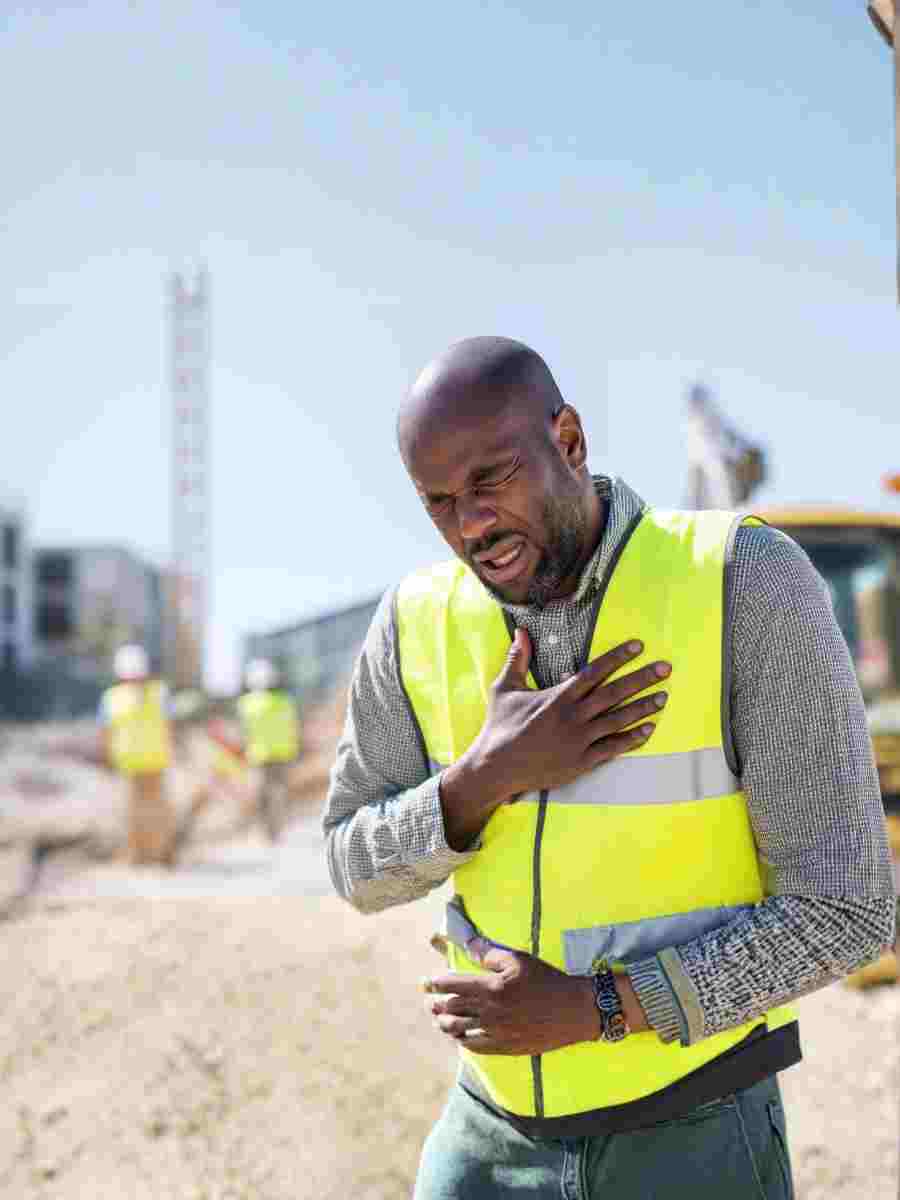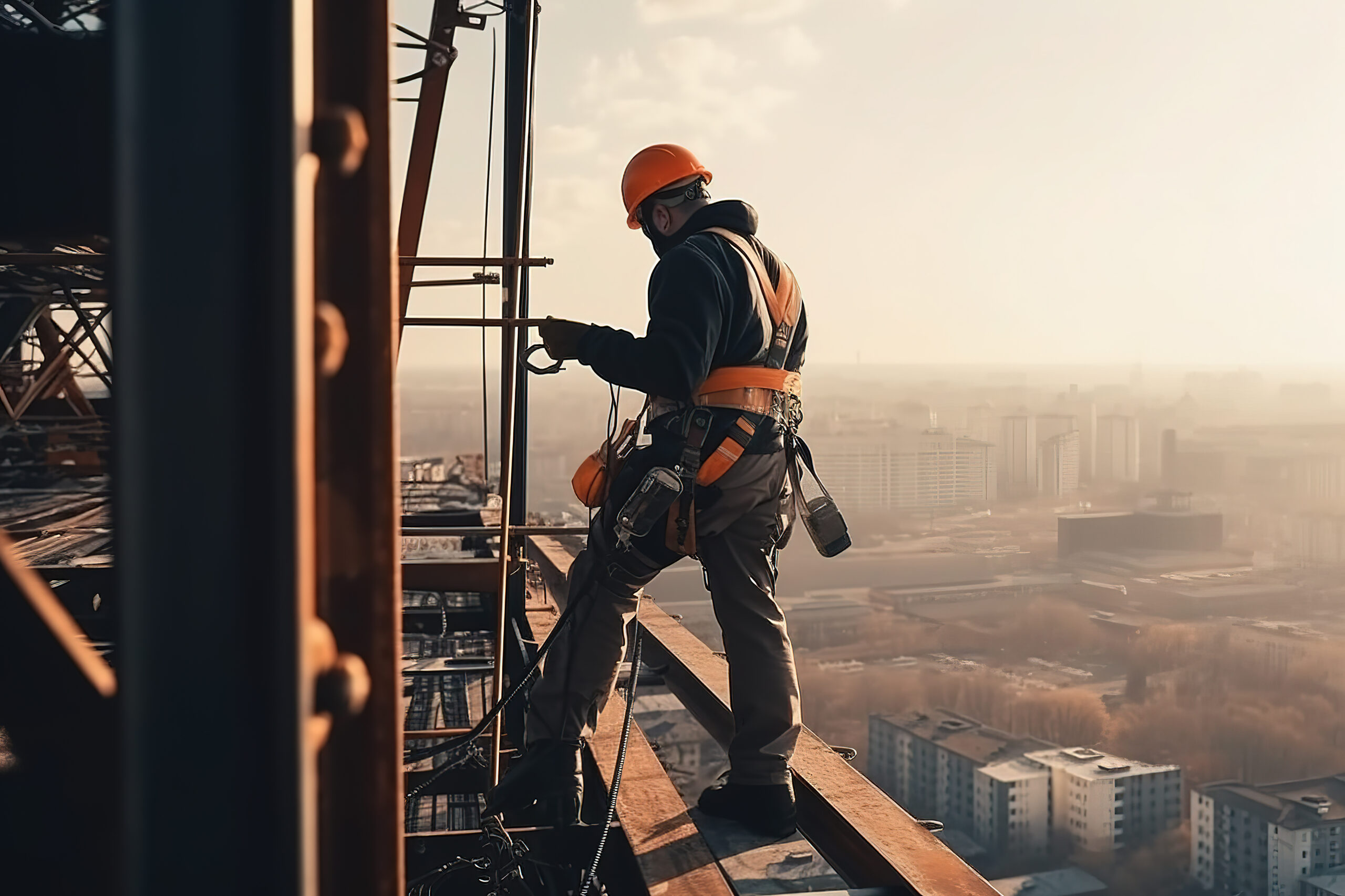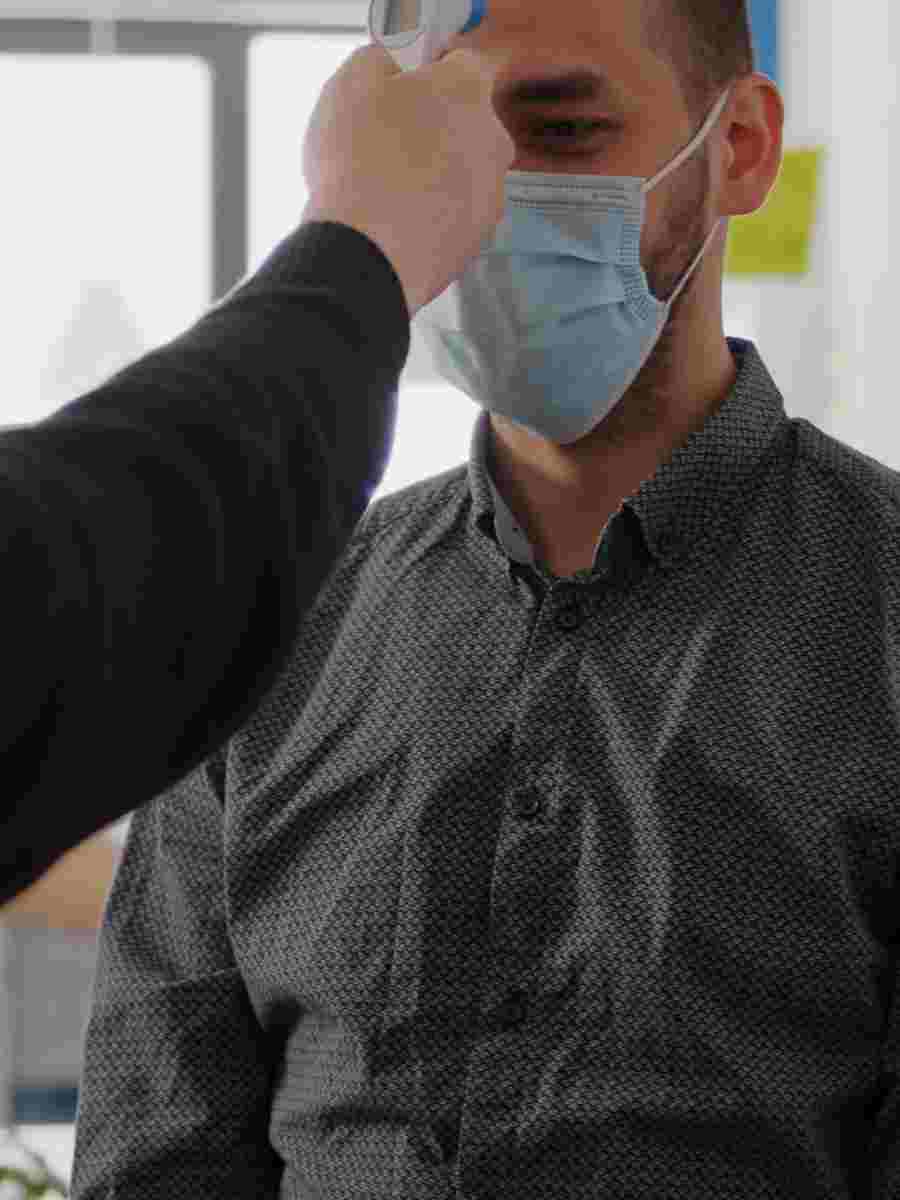The 'H' in HSEQ: Why Men's Health is a Workplace Safety Issue
What You Really Need to Know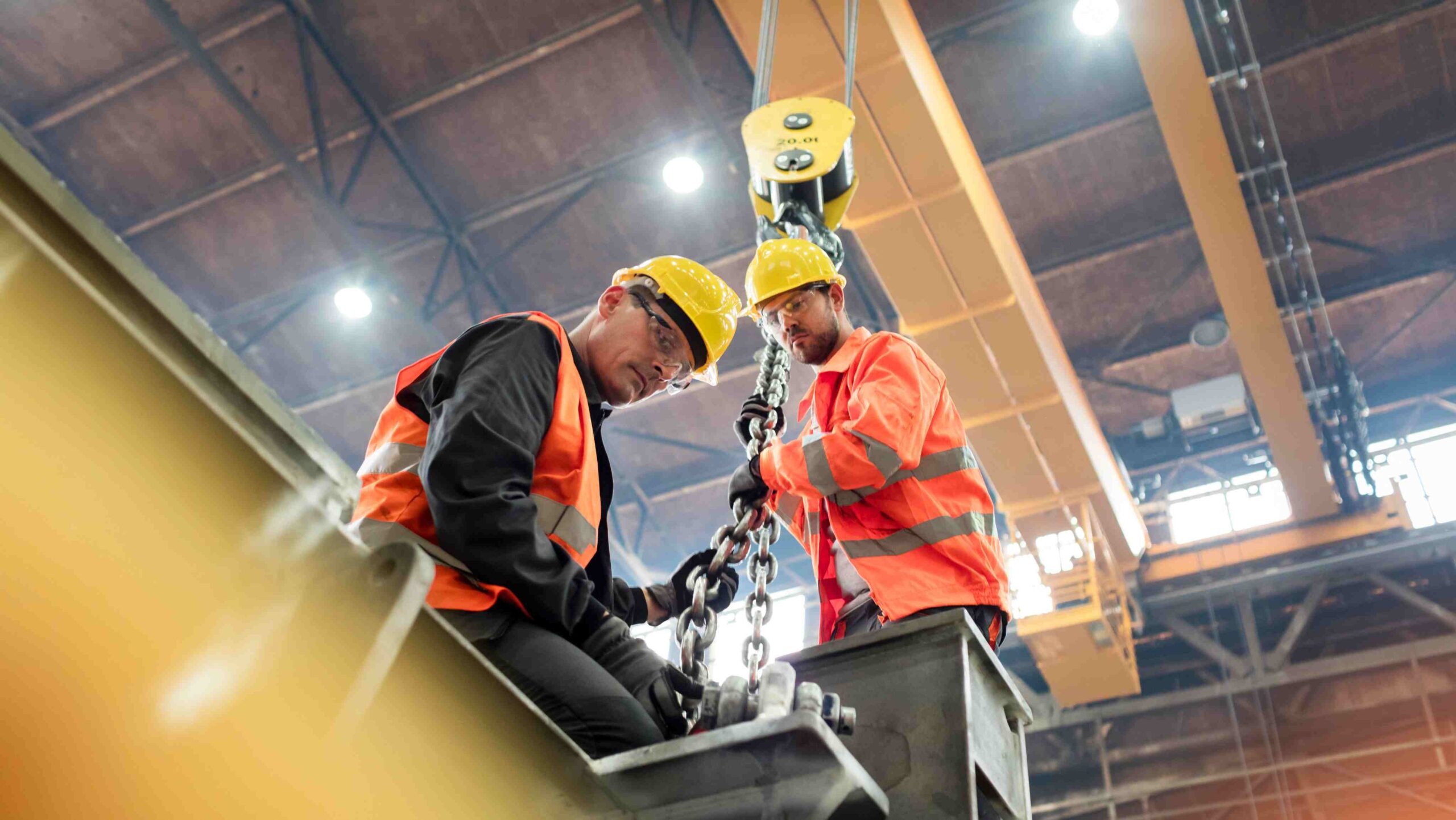
Introduction
November marks Movember a month dedicated to raising awareness of men’s health issues worldwide. But for Irish businesses, particularly in construction and manufacturing, this isn’t just about growing moustaches or raising funds. It’s about confronting a harsh reality: men account for the overwhelming majority of workplace fatalities in Ireland, and the connection between men’s health and workplace safety runs far deeper than most employers realise.
The latest figures from the Health and Safety Authority (HSA) paint a stark picture. Of the workplace fatalities recorded annually in Ireland, approximately 95% involve men. This isn’t simply about dangerous occupations it’s about a complex web of health issues, cultural attitudes, and workplace cultures that create perfect storms for preventable tragedies.
The Reality Check: Men are 10 times more likely to die in workplace accidents than women in Ireland. Construction alone accounts for over 40% of all workplace fatalities, with manufacturing adding another significant percentage. Behind these statistics are untold stories of unreported health concerns, ignored warning signs, and a culture of ‘getting on with it’ that’s literally killing Irish workers.
The Silent Crisis Why Men Don’t Report Health Issues
Walk onto any construction site or factory floor in Ireland, and you’ll encounter a culture that prizes physical strength, resilience, and the ability to ‘push through’ problems. These qualities, whilst valuable, become dangerous when they prevent men from acknowledging health issues that could compromise their safety and that of their colleagues.
Research consistently shows that men are significantly less likely than women to seek medical attention, report pain, or admit to mental health struggles. In male-dominated industries like construction and manufacturing, this tendency is amplified by workplace cultures that often equate health concerns with weakness or unreliability.
The Stigma Factor
The stigma surrounding men’s health in traditional industries isn’t just cultural it’s economic. Many workers fear that reporting health issues could impact their employment prospects, particularly in sectors where physical capability is closely tied to job security. This creates a dangerous cycle where health problems are concealed until they become serious enough to cause workplace incidents.
The Hidden Cost: Studies suggest that up to 60% of workplace incidents in male-dominated industries involve workers who were experiencing unreported health issues whether physical discomfort, medication side effects, mental health challenges, or fatigue that impaired their judgment or physical capabilities.
Physical Health The Foundation of Workplace Safety
The physical demands of construction and manufacturing work take a cumulative toll on men’s bodies, often in ways that aren’t immediately obvious but significantly impact safety performance. Cardiovascular disease, musculoskeletal problems, and the effects of shift work create a perfect storm of health challenges that directly influence workplace safety.
If physical health challenges are under-reported in male-dominated industries, mental health issues are virtually invisible. Yet the statistics are alarming: Central Statistics Office data shows that men account for approximately 80% of suicides in Ireland, with construction workers facing significantly higher rates than the general population.
The connection between mental health and workplace safety isn’t abstract it’s immediate and measurable. Depression, anxiety, stress, and substance abuse directly impact concentration, decision-making, and risk perception. Workers struggling with mental health issues are more likely to experience incidents, make errors, and engage in unsafe behaviours.
Cardiovascular Health and Workplace Performance
HSE Ireland data reveals that cardiovascular disease affects Irish men at significantly higher rates than women, with symptoms often appearing during prime working years. Undiagnosed or poorly managed heart conditions don’t just pose long-term health risks—they create immediate safety hazards through fatigue, reduced concentration, and impaired physical performance.
The connection between cardiovascular health and workplace incidents is well-documented. Workers experiencing chest pain, shortness of breath, or unusual fatigue are more likely to make errors, take shortcuts, or fail to follow safety procedures. Yet many men attribute these symptoms to ‘getting older’ or being ‘out of shape’ rather than seeking medical evaluation.
The Numbers Don’t Lie: Irish construction workers are 3 times more likely to suffer from chronic musculoskeletal problems than the general population. Workers with untreated back pain are 40% more likely to experience workplace incidents, often because they’re compensating for physical limitations in unsafe ways.
Mental Health The Invisible Safety Risk
If physical health challenges are under-reported in male-dominated industries, mental health issues are virtually invisible. Yet the statistics are alarming: Central Statistics Office data shows that men account for approximately 80% of suicides in Ireland, with construction workers facing significantly higher rates than the general population.
The connection between mental health and workplace safety isn’t abstract it’s immediate and measurable. Depression, anxiety, stress, and substance abuse directly impact concentration, decision-making, and risk perception. Workers struggling with mental health issues are more likely to experience incidents, make errors, and engage in unsafe behaviours.
The Construction Industry Mental Health Crisis
Construction workers face unique mental health challenges: job insecurity, seasonal employment, physical demands, and industry cultures that often discourage emotional expression. Mental Health Ireland research indicates that construction workers are 6 times more likely to die by suicide than workers in other industries.
The workplace safety implications are profound. Workers experiencing depression or anxiety may avoid asking questions about unfamiliar procedures, fail to report near-misses, or take unnecessary risks. Substance abuse often a coping mechanism for mental health issues directly impairs judgment and physical coordination.
Breaking Point: Research shows that workplace incidents spike during periods of high stress, seasonal changes, and economic uncertainty precisely when mental health challenges are most acute. The correlation isn’t coincidental; it’s causal and preventable through proper support systems.
Creating Psychological Safety Beyond Policies to Culture
Psychological safety the belief that one can speak up, ask questions, and report concerns without fear of negative consequences is fundamental to both mental health and workplace safety. In male-dominated industries, creating this environment requires deliberate cultural change that goes far beyond written policies.
Leadership Modelling
The most effective way to change workplace culture around men’s health is through visible leadership. When supervisors, managers, and experienced workers openly discuss health check-ups, take sick leave when needed, and demonstrate that health concerns are legitimate business issues, it gives permission for others to do the same.
This doesn’t mean oversharing personal medical information it means normalising the conversation around health as a safety issue. Leaders who acknowledge when they’re taking medication that might affect their work, when they need to modify duties due to health concerns, or when they’re seeking help for stress create environments where others feel safe to do likewise.
Practical Cultural Changes
Creating psychological safety requires systematic changes to workplace practices. This includes regular health check-ins during toolbox talks, clear procedures for reporting health concerns that might affect safety, and visible commitment from management that health disclosures will be handled supportively rather than punitively.
Breaking Down Stigma Practical Strategies
Addressing men’s health stigma in the workplace requires targeted strategies that work within existing industry cultures whilst gradually shifting attitudes. The most successful approaches focus on practical benefits rather than abstract health concepts.
Reframing Health as Performance
Rather than discussing health as a separate issue, successful programmes frame health management as performance optimisation. Workers respond positively to messages about maintaining peak performance, avoiding preventable downtime, and ensuring they can provide for their families throughout their careers.
Stigma-Reduction Strategies:
- Frame health check-ups as ‘performance MOTs’ similar to equipment maintenance
- Provide health screenings on-site during work hours to remove barriers
- Use peer champions respected workers who share their health stories
- Focus on family benefits: ‘Stay healthy for your children’s sake’
- Emphasise team responsibility: ‘Your health affects your mates’ safety’
- Celebrate health achievements alongside safety milestones
- Provide anonymous reporting options for health concerns
- Train supervisors to recognise and respond to health-related performance changes
Movember as a Gateway
Movember campaigns provide excellent opportunities to introduce health conversations in non-threatening ways. The focus on facial hair creates a light-hearted entry point to serious discussions about prostate cancer, testicular cancer, and mental health all critical issues for working-age men.
The Leadership Imperative
Movember campaigns provide excellent opportunities to introduce health conversations in non-threatening ways. The focus on facial hair creates a light-hearted entry point to serious discussions about prostate cancer, testicular cancer, and mental health all critical issues for working-age men.
Managers and supervisors play crucial roles in creating environments where men feel safe reporting health concerns. This requires specific skills and approaches that many leaders haven’t been trained in, particularly in industries where management roles often go to technically skilled rather than people-skilled individuals.
Recognising Warning Signs
Effective leaders learn to recognise changes in worker behaviour that might indicate health issues: increased irritability, changes in work quality, unusual fatigue, or social withdrawal. The key is approaching these observations supportively rather than punitively, focusing on ensuring the worker has the support they need rather than documenting performance problems.
Supportive Conversations
When health concerns arise, the supervisor’s response sets the tone for how other workers will view similar situations. Responses that emphasise problem-solving, support, and maintaining dignity encourage openness. Responses that focus on blame, inconvenience, or performance deficits reinforce the stigma that prevents health reporting.
Leadership Best Practice: The most effective supervisors frame health discussions around ensuring worker and team safety: ‘I’ve noticed you seem tired lately is everything alright? We need to make sure you’re able to work safely and that you’re getting the support you need.’ This approach demonstrates care whilst emphasising the business case for health management.
Health Surveillance and Early Intervention
Proactive health surveillance programmes can identify issues before they become safety risks. However, these programmes must be designed and implemented in ways that build rather than erode trust, particularly in industries where workers may be suspicious of management motives.
Occupational Health Integration
Effective occupational health programmes go beyond compliance requirements to provide genuine value to workers. This includes regular health screenings, early intervention programmes, and clear pathways for addressing health concerns before they become serious problems.
The key is ensuring that health surveillance serves workers’ interests as well as employer interests. When workers see tangible benefits early detection of health problems, access to treatment, workplace adjustments that reduce pain they become supporters rather than resistant participants.
Technology-Enabled Solutions
Modern technology offers new opportunities to support men’s health in ways that preserve privacy whilst providing valuable interventions. Wearable devices can monitor key health indicators, smartphone apps can provide mental health support, and telehealth services can reduce barriers to accessing care.
The Business Case: Beyond Moral Imperative
Whilst supporting men’s health is clearly the right thing to do, it’s also excellent business. Companies that implement comprehensive men’s health programmes see measurable returns on investment through multiple channels that directly impact the bottom line.
Reduced Incident Rates
Workplaces that actively support men’s health see significant reductions in incident rates. When workers feel safe reporting health concerns, when mental health issues are addressed early, and when physical health problems receive appropriate accommodation, the result is fewer accidents, injuries, and near-misses.
ROI Reality: Companies implementing comprehensive men’s health programmes report 25-40% reductions in workplace incidents, 30-50% decreases in absenteeism, and 60% improvements in worker satisfaction scores. The reduction in insurance premiums, compensation claims, and replacement costs typically pays for programme costs within 18 months.
Improved Retention and Recruitment
In competitive labour markets, companies that demonstrate genuine care for worker health have significant advantages in both retention and recruitment. Workers increasingly choose employers based on health and wellbeing offerings, and word-of-mouth recommendations from satisfied employees are powerful recruitment tools.
Enhanced Productivity
Healthy workers are more productive workers. When physical health problems are addressed early, when mental health issues receive appropriate support, and when workers feel valued and supported, productivity improvements are substantial and sustained.
HSA Requirements and Legal Obligations
Under the Safety, Health and Welfare at Work Act 2005, Irish employers have clear obligations to protect worker health and safety. These obligations extend beyond physical safety to include mental health and wellbeing, particularly where health issues could impact workplace safety.
The HSA has increasingly emphasised the importance of workplace health promotion and the role of employers in supporting worker wellbeing. Recent guidance documents stress that modern occupational health approaches must address the whole person, recognising the interconnections between physical health, mental health, and safety performance.
Duty of Care
Employers’ duty of care extends to creating environments where workers feel safe reporting health concerns that might affect their safety or that of their colleagues. This includes protection from discrimination or negative consequences when workers seek health support or require workplace adjustments.
Legal Reality: Irish courts increasingly recognise employer responsibility for workplace cultures that discourage health reporting. Companies that can demonstrate proactive efforts to support men’s health and create psychologically safe environments are significantly better protected from liability claims than those that rely solely on written policies.
Making It Real Starting the Conversation This Movember
This Movember provides the perfect opportunity for Irish businesses to begin serious conversations about men’s health as a workplace safety issue. The key is starting with small, achievable steps that build momentum rather than attempting comprehensive culture change overnight.
Begin with leadership commitment. When senior managers participate in Movember campaigns, share appropriate aspects of their own health journeys, and demonstrate that health is a legitimate business concern, it signals to all workers that these conversations are welcome and important.
Creating Psychological Safety Beyond Policies to Culture
Psychological safety the belief that one can speak up, ask questions, and report concerns without fear of negative consequences is fundamental to both mental health and workplace safety. In male-dominated industries, creating this environment requires deliberate cultural change that goes far beyond written policies.
Practical First Steps
Use Movember as a launching pad for broader health initiatives. Organise health screenings, bring in speakers to discuss men’s health issues, and create opportunities for workers to share their experiences and support each other. The informal conversations that arise from these activities are often more valuable than formal programmes.
This Month’s Challenge: Commit to one meaningful action that demonstrates your company’s support for men’s health. Whether it’s organising health screenings, training supervisors in mental health awareness, or simply starting conversations about health as a safety issue, the important thing is beginning the journey toward a healthier, safer workplace culture.
The ‘H’ in HSEQ isn’t just about compliance it’s about recognising that health and safety are inseparable, particularly for men in high-risk industries. Companies that embrace this understanding don’t just save lives; they build more productive, engaged, and resilient workforces that can weather the challenges of modern business.
This November, let’s move beyond raising awareness to taking action. The conversation about men’s health in the workplace needs to happen, and it needs to happen now. The lives and livelihoods of Irish workers depend on it.

Why Halloween is Ireland’s Deadliest Night on the Roads
The Invisible Danger Why Halloween is Ireland's Deadliest Night on the Roads What You Really Need to Know Introduction Halloween should be about ghosts and ghouls, trick-or-treating and fancy dress parties. It’s meant to be a night of harmless fun when children...
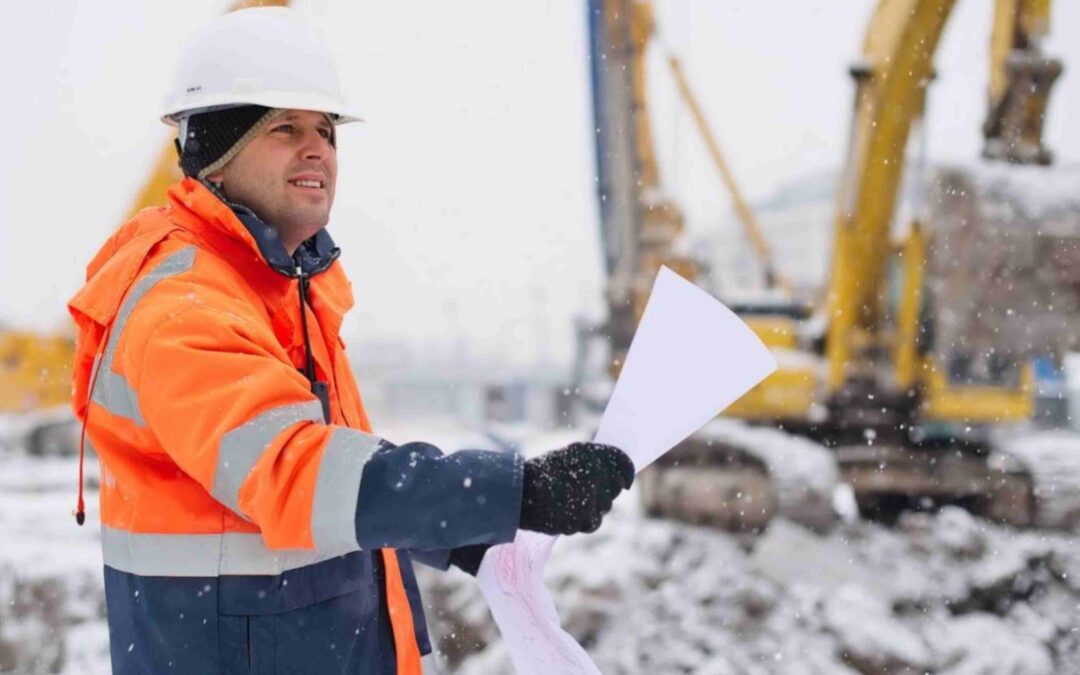
HSA Inspections Up 10% in 2025 Is Your Business Ready?
HSA Inspections Up 10% in 2025 Is Your Business Ready? Preparing for More HSA Scrutiny Are Your Workplace Safety Systems Audit-Ready? On 21st October 2025, the Health and Safety Authority made an announcement that sent ripples through Irish boardrooms and safety...

What “Quality” Really Means in 2025 Beyond the Checkbox
What "Quality" Really Means in 2025 Beyond the Checkbox What You Really Need to Know Introduction Halloween should be about ghosts and ghouls, trick-or-treating and fancy dress parties. It’s meant to be a night of harmless fun when children roam the streets in...

New EU Toy Safety Regulation
New EU Toy Safety Regulations What You Really Need to Know New EU Toy Safety Regulations On 13 October 2025, the Council of the EU approved its position on a new Toy Safety Regulation that will replace Directive 2009/48/EC. The Regulation tightens chemical controls,...

The AI Revolution in HSEQ
The AI Revolution in HSEQ. What the EU’s "AI Factories" Mean for UK and Irish Businesses What You Really Need to Know Introduction Artificial Intelligence (AI) is rapidly moving from a buzzword to an essential operational tool. Recently, the European Research Area...
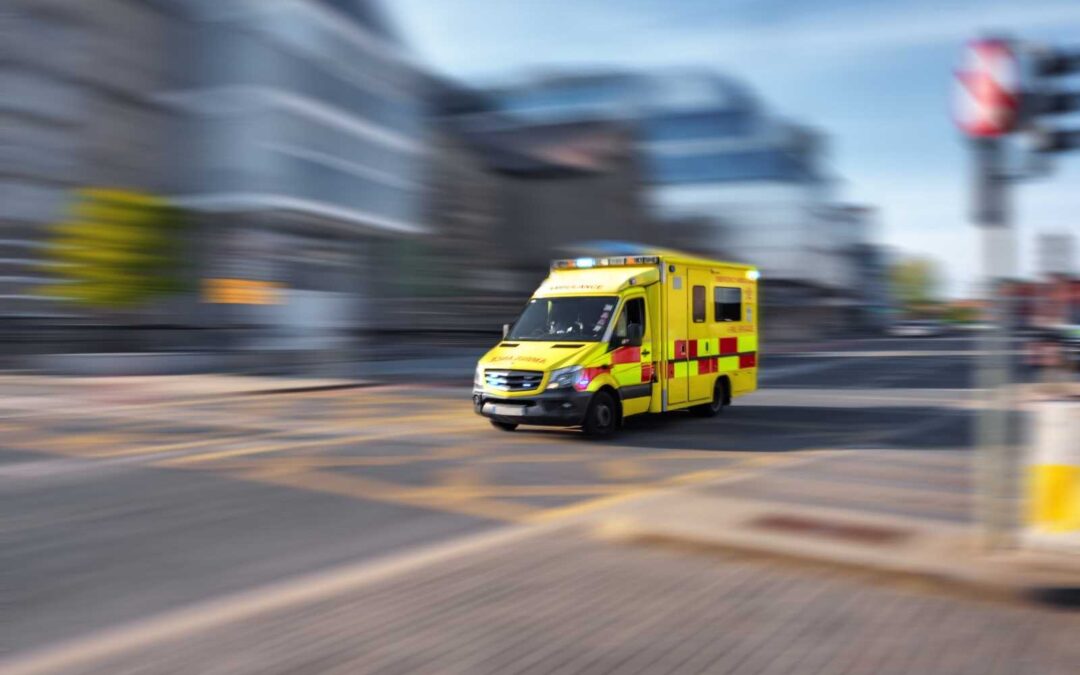
National Safety Boost Irish Government Launches New Emergency System
National Safety Boost Irish Government Launches New Emergency System What You Really Need to Know Enhancing Emergency Services Response Across Ireland In a major step forward for national safety, the Irish Government has announced the launch of a new, state-of-the-art...

Trojan Horse on Wheels
The Trojan Horse on Wheels. Why a UK Scooter Recall is a Major Irish Safety Warning What You Really Need to Know Lessons from a Critical Electrical Safety Failure In the world of workplace safety, the most serious threats often arrive in the most unassuming packages....

Fire Hazard Anker Power Bank Recall is a Workplace Wake-Up Call
Fire Hazard Anker Power Bank Recall is a Workplace Wake Up Call What You Really Need to Know The Shocking Truth About Power Bank Hazards In the world of tech accessories, few names are as recognised and trusted as Anker. That is why the recent major recall of their...

EU-OSHA 2026-2028 What It Means for Irish Workplace Health
EU-OSHA 2026-2028 What It Means for Irish Workplace Health What You Really Need to Know Your Strategic OSH Plan for the Years Ahead As 2025 draws to a close, forward-thinking Irish businesses are already planning for the challenges and opportunities of the years...

Winning the Leading Light Award The Real Secrets to Driving for Work Safety.
Winning the Leading Light Award The Real Secrets to Driving for Work Safety. What You Really Need to Know Unlocking Excellence in Road Safety Management Every year, the Road Safety Authority (RSA) shines a spotlight on the individuals, communities, and organisations...



